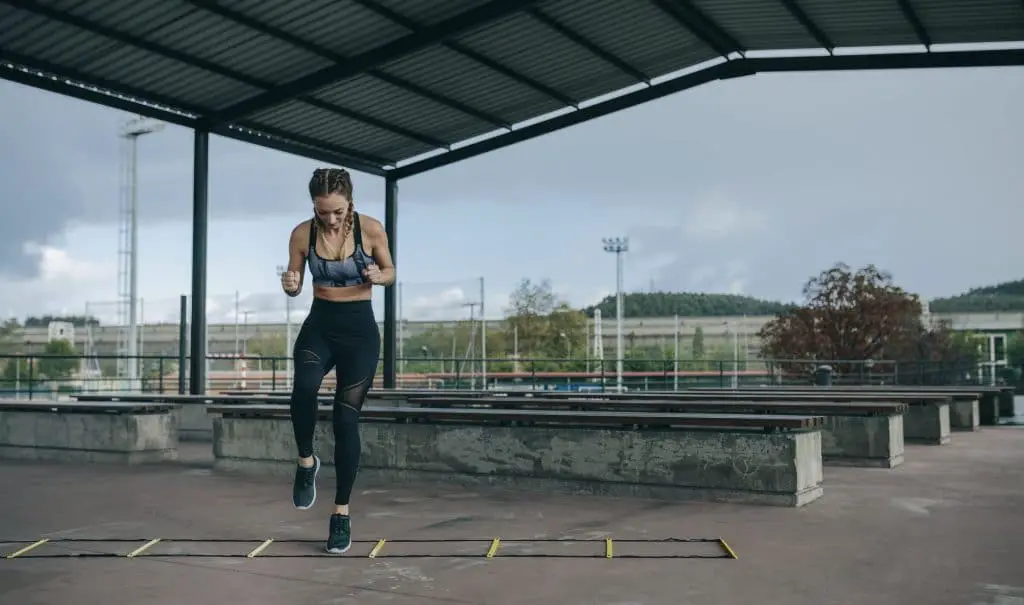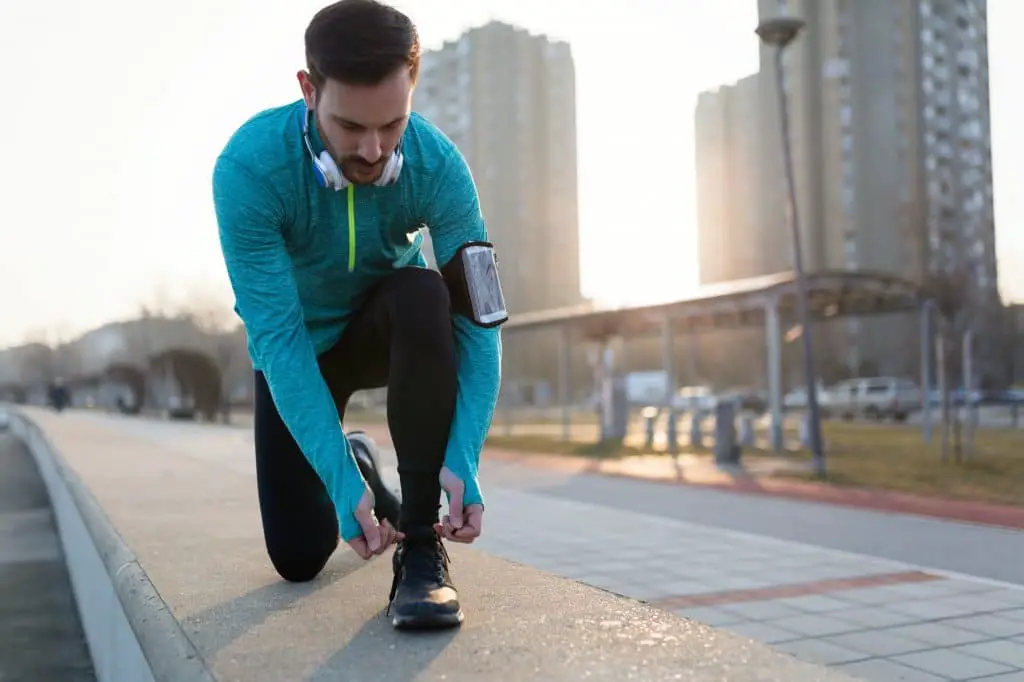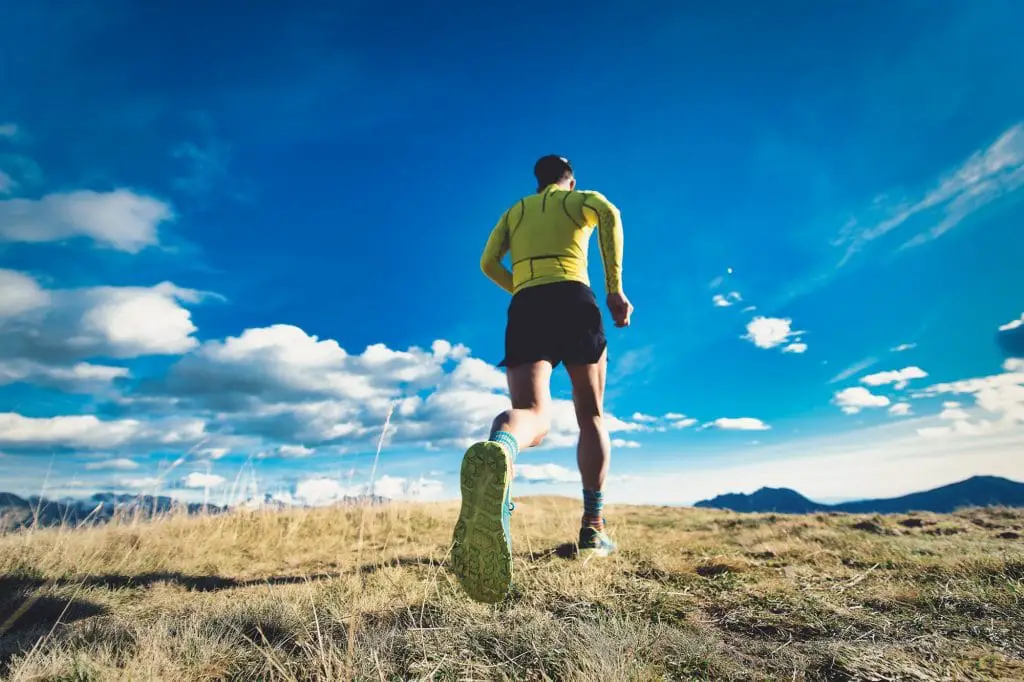Cross-training shoes, running shoes, and trail running shoes all have many similarities. However, they are not all the same. You’ll want to choose the one that fits your purpose.
Cross-training shoes are acceptable for running if it is a short run. In other words, they are not recommended for marathons.
Running shoes are acceptable for gym workouts that don’t require a lot of multidirectional foot movements. For example, forward treadmills, ab workouts, or cable machines.
What is the Difference Between Cross Training Shoes and Running Shoes?
Cross-training shoes are used for gym workouts and strength training including weightlifting. On the other hand, running shoes are specifically designed for runners who constantly strike the ground during their runs.
Cross-training shoes are used for activities like HIIT and CrossFit, which require rapid multidirectional movements. Running shoes offer better cushion and support for the forward-motion movement, which will help runners last longer on the road.
Related: Do You Need Special Shoes for Track? 9 Types of Track Shoes
Related: Best Shoes for HIIT for Women
You may be wondering why you should buy any of these types of shoes. Wouldn’t trail shoes work for running on the road? Wouldn’t cross training shoes work for running on a trail?
The short answer is, yes. You could probably get away with using trail running shoes on the road. However, it wouldn’t be ideal. In order to get your best performance, you need to be equipped with the right shoes for your chosen activity. The last thing you want is for your performance to be held back by your equipment.
What are Cross Training Shoes Good For?

As we’ve discussed, cross-training shoes sacrifice heel cushioning for breathability and ease of movement. They also tend to be more lightweight. They typically also have extra protection for the ankles. Some of their features are very similar to running shoes, but some are quite different:
- Flexible materials in the midsole – instead of focusing on comfort and padding, cross trainer’s midsoles are designed to flex. This makes them great for movement in any direction, not just running!
- Breathable mesh linings – just like road running shoes, cross trainers usually come with very breathable coverings.
- Grooved outsoles – in a combination between a road running shoe and a trail running shoe, cross trainers feature a grooved outsole for traction and protection. It is a good blending of the lightweight traction of a road shoe and the lugged protection of a trail shoe.
A good set of cross-training shoes should provide adequate support in the most fragile areas of the feet. Here is What to look for in Cross Training Shoes:
Arch Support
Having an expert at your local store helps you to determine your arch type. Most brands have a shoe that will fit each kind of arch for the proper support. The arch is one of the most important parts of the feet! It helps to prevent Plantar Fasciitis and gives your foot the structure that it needs.
Flexible Uppers
A good cross trainer should have a sturdy cover that will help protect the top of your foot from strain. This cover should also be breathable to help keep you from overheating. Take a walk around in your new shoes and make sure they flex comfortably on the top.
Heel Support
For CrossFit and other intense exercise styles, you’ll want a shoe that has good heel support in the form of extra plastic or other materials on the heel. You may not always see the support, but as long as your shoe has extra heel padding, you’re good to go.
Midsole Padding and Tread
For climbing activities, you’ll want to look for a shoe that has an extra grip around the midsole of the shoe. This also provides extra foot support for leg-based workouts. If you find that you’re doing exercises that require gripping something between your feet, you are going to want some midsole traction.
Forefoot and Heel Traction
Make sure the shoe will provide you with a nice, firm grip on most surfaces. This will depend on where you plan to exercise. You’re going to be landing on the balls of your feet a lot with many different types of exercise. Make sure that you can jump and land comfortably without fear of slipping and sliding.
Size Matters
Get a shoe that fits! A shoe that is too small or too big will cause pain and blisters. You should have about a thumb’s width between your toes and the front of the shoe. Also, be sure to check with an expert to see if you need a wider or narrower shoe.
You may also find that you need a certain type of shoe to fit your specific gait. If you’re a heel striker, midfoot striker, or forefoot striker, you’ll need padding in different areas.
Material
Make sure your shoe isn’t made of cheap materials. Synthetics are usually good and will hold up well against moisture and wear.
Who is Cross Training Shoes for?
Cross-training shoes are good for people who do strength and agility training. A good example of this is gym workouts, HIIT, CrossFit, and weight lifting. Out of these three options, cross-training shoes are the most versatile.
While you can do shorter distance runs in these shoes, it is not recommended that you do a long-distance run while wearing cross-trainers. These shoes are designed for higher intensity, shorter duration workouts that involve weights and movement in all directions.
These shoes lack the cushioning for long-distance road runs and don’t have all the tread needed to safely run on the trails.
What are Running Shoes Good For?

Running shoes provide lots of cushions to protect your joints from the impact of a long run on the road or a treadmill. They also provide stability for your heel and ankles to prevent injury. These shoes will usually have the following features:
- Cushioning in the midsole – this provides comfort and shock-absorption for a long run over hard surfaces.
- Mesh linings on top – this gives the user a lot of breathability during a workout.
- Rubber outsoles – rubber is a lightweight material that allows for a lighter shoe overall. These outsoles usually come in a ridged pattern that gives the wearer good traction on most flatter surfaces.
Road running shoes are all about support over long distances. A good pair of road running shoes should have the following features:
Heel cushioning
When you run, you’re going to be striking more toward the heel and then rolling your foot forward. A good pair of road running shoes will have excellent padding around the heel. The padding should taper off towards the ball of the foot to allow for an easy push-off during your stride.
Related: How Does Heel Drop Affect Running? 8mm vs 4mm vs Zero Drop
Lightweight mesh
Over the course of a long run, your feet are going to get hot. It is important to make sure your shoes have plenty of mesh lining to allow for airflow to your feet.
Forefoot support
While you may not have as much cushioning around the balls of your feet, a good road running shoe should have plenty of structure to keep your forefoot supported during your stride.
Arch support
During the long run, your arch is going to be under some strain. As everyone has a different arch and tendency toward over and under pronation, it is important to know your foot shape. Go get fitted by an expert to determine the right type of arch support for you.
Who is Running Shoes for?
Running shoes are for runners running on pavement and concrete, as well as treadmills and tracks. If you are a long-distance runner, you’re going to want a shoe that is specially designed to give you comfort and support for a long run on the road, track, or treadmill. Using a specialized shoe like this can help to prevent injuries in the future.
Related: Top 8 Best Running Shoe Brands that are Trusted by the Public
What are Trail Running Shoes Good For?

Trail runners are very similar to regular running shoes. The difference comes in their thicker soles and added traction. They also tend to feature higher ankles for protection from injury and debris. Typically, hiking shoes have these features:
- Cushioning in the midsole – just like a road running shoe, trail running shoes have midsole cushioning for long-term support on hard terrain.
- Synthetic coverings – instead of having mesh on top, trail running shoes use synthetic materials for more protection against debris. You will sacrifice some breathability for this protection when compared to a regular running shoe.
- Outsole with lugs – unlike the standard rubber outsole of a road running shoe, trail running outsoles feature heavy-duty lugs for added traction and protection from dangers on the trail.
Trail running shoes tend to be heavier than both road shoes and cross-training shoes. With this added weight comes increased protection against any obstacles you might run into out on the trails. Here are some features you should look for in a good pair of trail shoes:
Lugged outsole
This is one of the most important features of a trail shoe. We’ve already mentioned it briefly, but these lugs are used to protect the foot and provide traction over almost any surface you’ll run into the outside. They can come in many different patterns and shapes.
Deep tread
Make sure your shoe has a thick, deep tread. This will help you to grip most surfaces on the trail. A deep tread also means a thicker sole. Thicker soles help to aid in shock-absorption while you run.
Toe guards
If you want extra protection, look for a trail shoe with a rubber cap over your toes. Should you be unlucky enough to stub your toes on a rock or root, this cap will help to prevent any serious injuries from occurring.
Protective uppers
The top coverings of trail shoes typically have more durable materials than mesh to keep debris out of your shoes. They may not be as breathable as a road shoe, but you’ll be glad not to have as much dirt stuck to your socks at the end of a long run on the trail.
Who is Trail Running Shoes for?
Trail running shoes are tailor-made for people who run outdoors over rough terrain. They’re made to run on soft dirt and rough rocks and roots. Wearing road running shoes instead of trail running shoes on the trail could increase your risk of injuries.
Road running shoes lack the support and protection of trail running shoes. Conversely, running on the road with a trail running shoe can actually wear out the tread much faster than intended. The thick lugs are not designed for constant scraping against a hard surface like pavement.

Austin is the author of loveatfirstfit.com and a personal trainer with extensive knowledge in nutrition. Austin is passionate about helping others to find a suitable healthy lifestyle and feel good about themselves. Austin’s goal is to help people push their limits and achieve their physical performance.

